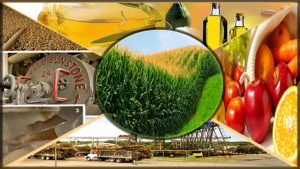 Rocks and minerals are formed under a very high temperature and pressure, exposed to atmospheric conditions of low pressure and low temperature and they become unstable and weather.
Rocks and minerals are formed under a very high temperature and pressure, exposed to atmospheric conditions of low pressure and low temperature and they become unstable and weather.
Soils are formed from rocks through the intermediate stage of formation of Regolith which is the resultant of weathering.
The sequence of processes in the formation of soils is:
Weathering of rocks and minerals -> formation of regolith or parent material ->formation of true soil from regolith
Rock ->Weathering ->Regolith ->Soil forming factors and processes ->True soil (otherwise)
Two processes involved in the formation of soil are:
Formation of regolith by breaking down (weathering) of the bed rock.
The addition of organic matter through the decomposition of plant and animal tissues, and reorganization of these components by soil forming processes to form soil.
Weathering: A process of disintegration and decomposition of rocks and minerals which are brought about by physical agents and chemical processes, leading to the formation of Regolith (unconsolidated residues of the weathering rock on the earth’s surface or above the solid rocks).
(OR)
The process by which the earth’s crust or lithosphere is broken down by the activities of the atmosphere, with the aid of the hydrosphere and biosphere
(OR)
The process of transformation of solid rocks into parent material or Regolith
Parent material: It is the regolith or at least its upper portion. May be defined as the unconsolidated and more or less chemically weathered mineral materials from which soil are developed
Two basic processes of Weathering:
Physical (or) mechanical – disintegration
Chemical – decomposition
In addition, another process: Biological and all these processes are work hand in hand
Depending up on the agents taking part in weathering processes, it is classified into three types.
Different agents of weathering
| Physical/ Mechanical(disintegration) | Chemical(decomposition) | Biological (disint + decomp) |
1.Physical condition of rock | 1.Hydration | 1.Man & animals |
2.Change in temperature | 2.Hydrolysis | 2. higher plants & their roots |
3.Action of H2O | 3.Solution | 3.Micro organisms |
-fragment & transport | 4.Carbonation |
|
– action of freezing | 5.Oxidation |
|
– alter. Wet & drying | 6.Reduction |
|
– action of glaciers |
|
|
4.Action of wind |
|
|
5. Atmosp. electric pheno |
|
|
Original Article Here







